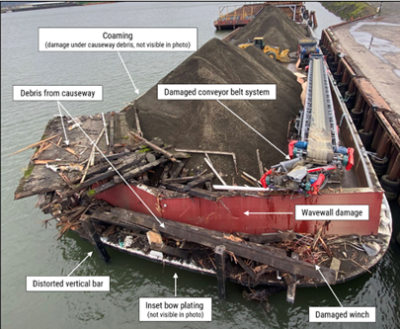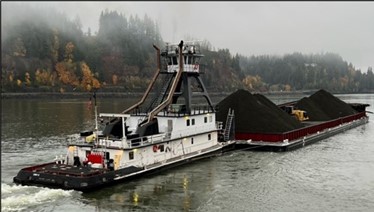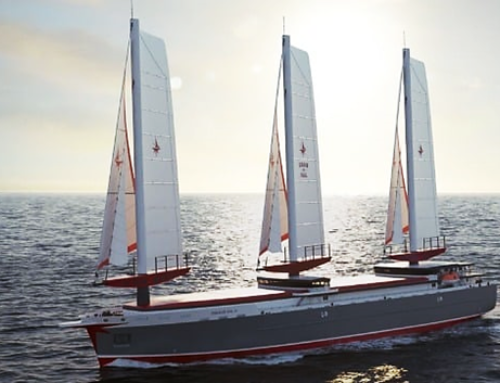Asleep at the Helm: The Risks of Fatigue in the Maritime Industry
 In the early hours of November 12, 2023, a towing vessel named Cindy B was navigating the Columbia River when an accident occurred. At the helm was a deckhand who had fallen asleep, leading the tow to veer off course and strike the Port Westward Beaver Dock near Clatskanie, Oregon. The incident, highlighted in an investigation by the National Transportation Safety Board (NTSB), sheds light on a critical issue facing the maritime industry: fatigue and exhaustion.
In the early hours of November 12, 2023, a towing vessel named Cindy B was navigating the Columbia River when an accident occurred. At the helm was a deckhand who had fallen asleep, leading the tow to veer off course and strike the Port Westward Beaver Dock near Clatskanie, Oregon. The incident, highlighted in an investigation by the National Transportation Safety Board (NTSB), sheds light on a critical issue facing the maritime industry: fatigue and exhaustion.
The deckhand’s exhaustion stemmed from a demanding schedule, including a challenging transition from day to night shifts. The six-hour night watch, which began at midnight, aligned with a natural low in human circadian rhythm. His drowsiness escalated with the shift change, significantly impacting his alertness and vigilance—a situation that ultimately led to an expensive accident, with damages to the barge St. John and the Beaver Dock estimated at $6 million.
Understanding the Human Factor in Maritime Safety
Marine accidents are rarely the result of a single oversight. The NTSB investigative report emphasized that fatigue has been an ongoing factor in marine casualties. Mariners on night shifts, much like other shift workers, are at an increased risk of attentional lapses and reduced alertness. Night shifts are especially problematic in the first two nights of a new rotation, when crewmembers are still adjusting to the shift in their sleep/wake cycle. This adjustment period is where mariners, as well as other shift workers, face heightened risk, as they are more vulnerable to mistakes during this transition.
 In the case of the Cindy B, the onboard pilothouse alerter system, designed to keep watch crew awake, did not activate because a swinging VHF radio microphone interfered with its motion sensors. Instead of alerting the deckhand to wake him, the microphone continued to reset the system’s timer, rendering it ineffective.
In the case of the Cindy B, the onboard pilothouse alerter system, designed to keep watch crew awake, did not activate because a swinging VHF radio microphone interfered with its motion sensors. Instead of alerting the deckhand to wake him, the microphone continued to reset the system’s timer, rendering it ineffective.
“A pilothouse alerter, when used as intended, is an effective tool that can help ensure that a crewmember remains awake and vigilant while on duty,” the NTSB investigators noted. However, they emphasized the need for stringent procedures in the use and setup of such systems to ensure they cannot be unintentionally reset.
Fatigue on the water is not a new concern. Many studies have documented that night shift workers experience a significant loss of alertness, compared to those working during the day. With long hours, unpredictable schedules, and physical demandingness, fatigue on the job is exacerbated for maritime workers. Nighttime operations in particular carry inherent risks, as human circadian rhythms naturally dip in the early morning hours, making it challenging to stay awake and alert.
The risks extend beyond the immediate crew as well. Fatigue-related incidents lead to significant financial costs and potential environmental hazards, especially when involving fuel or hazardous materials. Because of this, addressing fatigue is, therefore, a pressing safety and economic issue for the maritime industry.
While fatigue in the marine industry cannot be completely eliminated, there are ways to manage its impact. The NTSB’s report highlights tools like pilothouse alerter systems as essential safeguards, but also points to the importance of strict operational protocols to ensure these tools function correctly. For instance, modifications in crew scheduling, such as allowing longer rest periods between shifts, can mitigate the effects of fatigue, helping mariners remain alert and responsive.
Educational programs to raise awareness about the impact of sleep loss on performance can also be valuable. By recognizing the signs of fatigue and understanding how to manage it, mariners can better protect themselves and their vessels. The NTSB stresses that the industry needs to prioritize preventive measures to avoid future incidents, understanding that fatigue is not only a personal health issue—it is a critical risk factor in marine safety.
The Cindy B incident serves as an important reminder of the dangers posed by fatigue in maritime operations. The balance between operational demands and crew well-being must be addressed. Through technological improvements, effective procedures, and a commitment to better shift management, the maritime industry can work toward safer and more sustainable practices, and reduce the risk of fatigue-related incidents. For mariners, understanding the impact of fatigue is essential to not only their safety, but for the security of the waters they navigate.
10/28/2024
Image Credit: NTSB, Colombia Paficic Bio-Refinery, U.S. Coast Guard










